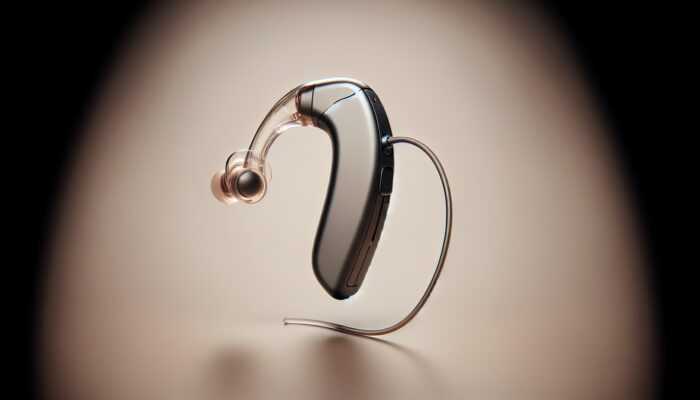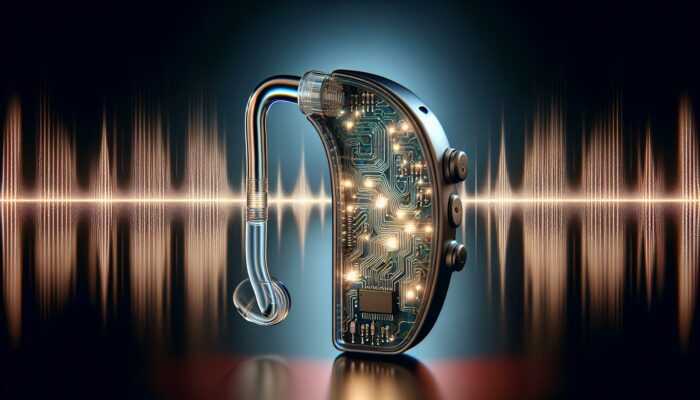Enhancing Healthcare Delivery through Virtual Assistants in the NHS
Optimising Patient Appointment Management

Efficient management of patient appointments is a fundamental element of healthcare delivery within the NHS. The introduction of innovating with healthcare virtual assistants has transformed this aspect significantly. Virtual assistants are instrumental in minimising the occurrence of missed appointments, often referred to as ‘no-shows’. These advanced digital tools are capable of sending automated reminders directly to patients via text messages or emails, ensuring they remain informed about their upcoming appointments. Consequently, this leads to a marked reduction in missed appointments and an overall enhancement in operational efficiency, allowing healthcare providers to allocate resources more effectively.
Furthermore, virtual assistants facilitate the scheduling process by providing immediate feedback regarding available dates and times. This feature is especially advantageous for patients with busy schedules who may find it challenging to make traditional phone calls to their GP’s office. By simplifying the booking process, virtual assistants not only improve patient satisfaction but also free up essential staff time, allowing healthcare professionals to concentrate on more critical tasks. The integration of these innovative digital tools within the NHS exemplifies a progressive approach to patient management, addressing long-standing challenges within the healthcare system.
In addition, virtual assistants excel in managing patient data efficiently. They can swiftly access and document essential patient information, further streamlining the appointment process. This functionality not only aids healthcare providers in optimising their schedules but also contributes to a more organised and effective healthcare system overall. As the NHS continues to explore innovative solutions for enhancing service delivery, the role of virtual assistants is poised to expand, offering even more creative approaches to the common challenges faced within healthcare across the UK.
Advancing Telemedicine Services through Virtual Assistants
The emergence of telemedicine has profoundly transformed healthcare delivery in the UK, enabling patients to consult with healthcare professionals from the comfort of their homes. The role of innovating with healthcare virtual assistants has been pivotal in making telemedicine more accessible and user-friendly. By assisting patients in navigating the process of setting up virtual appointments, these assistants help eliminate the technological barriers that may hinder some individuals from utilising remote healthcare services.
Equipped with the necessary tools, virtual assistants can guide patients through telemedicine platforms, offering step-by-step assistance for those who may not be familiar with the technology. They are also available to respond to queries related to the consultation process, which helps to instil confidence in patients who might otherwise feel apprehensive about participating in remote consultations. This level of support not only enhances patient engagement but also optimises the overall efficiency of healthcare delivery within the NHS.
Moreover, virtual assistants ensure that patients are adequately prepared for telemedicine appointments by reminding them to gather relevant medical information or documents beforehand. This proactive approach significantly improves the overall experience of remote consultations, making them more productive and effective. As the NHS embraces the future of healthcare, the incorporation of virtual assistants in telemedicine will serve as a foundational element in guaranteeing that every patient, regardless of their location, receives timely and effective care.
Enhancing Mental Health Initiatives with Digital Support
Mental health has emerged as a significant concern in the UK, with the NHS facing increasing demands to provide adequate support and resources. In this context, virtual assistants are stepping up to play a crucial role in addressing these needs. By innovating with healthcare virtual assistants, the NHS can offer readily accessible mental health resources to patients, helping to diminish the stigma associated with seeking help.
These digital assistants are capable of providing instant access to a wealth of mental health information, which includes symptoms, treatment options, and coping strategies. Additionally, they can guide individuals towards appropriate services, whether through self-help resources or by directing them to necessary professional support. This immediate access to pertinent information empowers patients to take charge of their mental health journey, encouraging proactive engagement with healthcare services.
Furthermore, virtual assistants can facilitate mental health check-ins, reminding patients to engage in self-care practices or follow up on their mental health plans. Given the NHS’s heightened pressure to meet mental health needs, the implementation of virtual assistants represents a scalable solution that meets patients where they are, ensuring that mental health support is not only available but also easily accessible. As the integration of these technologies continues to evolve, their role in supporting mental health initiatives will undoubtedly be invaluable for patients and healthcare providers alike.
Transformative Technological Innovations in UK Healthcare

Harnessing AI and Machine Learning for Enhanced Healthcare
The incorporation of artificial intelligence (AI) and machine learning within the NHS is driving remarkable advancements in healthcare delivery. By innovating with healthcare virtual assistants, the NHS can harness AI algorithms to analyse extensive amounts of patient data, resulting in improved diagnostics and personalised treatment plans. These cutting-edge technologies enhance the accuracy of medical assessments while simultaneously minimising the potential for human error, thereby improving patient outcomes.
AI applications are particularly effective in specialised fields such as radiology and pathology, where they can assist in identifying patterns and anomalies in imaging results that may be overlooked by human eyes. For instance, machine learning algorithms can analyse X-rays or MRI scans, providing radiologists with supplementary insights that can inform their diagnoses. This collaboration between human expertise and machine intelligence significantly enhances patient outcomes by ensuring that medical interventions are both timely and accurate.
Moreover, AI-driven virtual assistants can offer predictive analytics, which identifies potential health risks based on patient history and demographic data. By flagging issues before they escalate, healthcare providers can implement preventive measures that ultimately enhance patient care. The integration of these technologies signifies a transformative shift in how the NHS approaches healthcare delivery, enabling a more proactive and data-informed strategy that prioritises patient needs and outcomes.
The continuous evolution of AI and machine learning technologies holds tremendous promise for the future of the NHS. As these innovations become increasingly sophisticated, they will undoubtedly play a central role in improving service delivery and patient satisfaction, making healthcare more responsive to the unique needs of individuals across the UK.
Seamless Integration with Electronic Health Records
The seamless integration of virtual assistants with electronic health records (EHR) represents a groundbreaking advancement for the NHS. By innovating with healthcare virtual assistants, the NHS can ensure that healthcare professionals have instant access to comprehensive patient information, which is critical for delivering high-quality care. This integration allows virtual assistants to efficiently retrieve, update, and manage patient records, significantly reducing administrative burdens on staff.
With virtual assistants serving as intermediaries between healthcare providers and EHR systems, they can streamline the flow of information, facilitating faster decision-making processes. For example, during a consultation, a doctor can quickly access a patient’s medical history, allergies, and previous treatments, leading to more informed diagnoses and treatment plans. This immediate access to vital data not only enhances patient care but also improves the overall efficiency of healthcare services across the board.
Additionally, the integration with EHR systems empowers virtual assistants to alert healthcare professionals about critical updates or changes in a patient’s condition. This proactive approach ensures that patients receive timely interventions, which is particularly crucial in emergency situations. As virtual assistants continue to evolve, their ability to enhance EHR functionality will become increasingly important in the quest for a more efficient and effective NHS.
However, the growing integration of EHR systems with virtual assistants also raises important questions regarding data privacy and security. Ensuring that robust security measures are in place is essential for maintaining patient trust and confidentiality. As the NHS embraces these technological advancements, a commitment to safeguarding patient data will be vital to unlocking the full potential of virtual assistants in healthcare.
Implementing Robust Cybersecurity Measures for Patient Data

As the NHS increasingly relies on digital technologies, the significance of strong cybersecurity measures cannot be overstated. The integration of innovating with healthcare virtual assistants presents unique challenges regarding data protection and patient privacy. To maintain trust in NHS services, it is imperative that robust cybersecurity protocols are established to safeguard sensitive patient information from potential breaches.
Virtual assistants often handle a vast array of personal and medical data, making them prime targets for cyberattacks. Therefore, it is essential to implement advanced encryption techniques and secure data storage solutions to protect patient records from unauthorised access. Regular audits and assessments of cybersecurity measures can identify potential vulnerabilities, enabling the NHS to proactively address these issues before they escalate into major problems.
Furthermore, raising awareness among NHS staff regarding cybersecurity best practices is critical. Comprehensive training programmes should emphasise the importance of safeguarding patient data and recognising potential security threats. By fostering a culture of cybersecurity awareness, the NHS can enhance its overall security posture and significantly mitigate the risks associated with using virtual assistants in healthcare settings.
A commitment to robust cybersecurity measures will not only protect patient data but also reinforce public confidence in the NHS’s ability to responsibly utilise innovative technologies. As virtual assistants continue to evolve, incorporating stringent cybersecurity practices will be integral to their successful implementation and acceptance within the healthcare system.
Advancing Telemedicine and Remote Monitoring Technologies
The rise of telemedicine and remote monitoring technologies signifies a pivotal shift in healthcare delivery, particularly within the NHS. By innovating with healthcare virtual assistants, the NHS can significantly enhance patient care while also alleviating pressure on its resources. Virtual assistants facilitate seamless communication between patients and healthcare providers, enabling timely consultations and follow-ups.
Remote monitoring devices, enabled by virtual assistants, empower patients to manage chronic conditions from the comfort of their homes. For example, wearable technology can track vital signs such as heart rate or blood glucose levels, transmitting data directly to healthcare professionals. This capability allows doctors to monitor patient health remotely, facilitating timely interventions when necessary. The use of virtual assistants in this context fosters patient engagement, promoting a sense of autonomy in managing their health.
Moreover, virtual assistants play a vital role in educating patients on how to effectively utilise these remote monitoring tools. By providing clear instructions and ongoing support, they ensure that patients are comfortable with the technology, ultimately leading to better health outcomes. This proactive approach not only empowers patients but also optimises the efficiency of healthcare delivery by minimising unnecessary in-person visits, thereby conserving valuable healthcare resources.
As the NHS embraces the future of telemedicine, the integration of virtual assistants will be instrumental in creating a more patient-centred healthcare system. This transition towards remote care not only enhances access for patients, particularly those in rural or underserved areas, but also alleviates pressure on NHS facilities, allowing healthcare providers to concentrate on more complex cases requiring in-person attention.
Revolutionising Surgical Procedures through Robotics and Automation
The emergence of robotics and automation within surgical environments represents a remarkable advancement for the NHS. By innovating with healthcare virtual assistants, the integration of robotic technologies enhances surgical precision and efficiency, ultimately leading to improved patient recovery times and outcomes. This innovative approach transforms the landscape of surgical procedures, enabling healthcare professionals to deliver enhanced care.
Robotic systems can assist surgeons in performing intricate procedures with unparalleled accuracy. For example, robotic-assisted surgeries enable minimally invasive techniques that result in smaller incisions and reduced recovery periods for patients. This advancement not only benefits patients by minimising trauma but also enhances the overall surgical experience, promoting faster recovery and improved satisfaction.
In addition to refining surgical precision, virtual assistants can play a crucial role in pre-operative and post-operative care. They can assist in educating patients about the surgical process, helping to alleviate any anxiety they may have. Furthermore, virtual assistants can monitor patients’ recovery progress, providing timely reminders for medication and follow-up appointments, ensuring that patients adhere to their post-surgery plans effectively.
The integration of robotics and automation into surgical practices, powered by virtual assistants, signifies a new era in NHS healthcare delivery. As these technologies continue to evolve, they will undoubtedly play a pivotal role in transforming surgical standards, enhancing patient safety, and improving overall healthcare efficiency across the UK.
Investing in Training and Development for Healthcare Staff
Comprehensive Training for Virtual Assistant Utilisation
The successful implementation of virtual assistants within the NHS relies heavily on comprehensive training for healthcare staff. By innovating with healthcare virtual assistants, the NHS can ensure that its workforce is adequately equipped with the skills necessary to utilise these technologies effectively. Training programmes should be meticulously designed to enhance staff understanding of virtual assistant capabilities, enabling them to leverage these tools to improve patient care and operational efficiency.
Healthcare staff must be thoroughly familiarised with how virtual assistants can streamline processes such as appointment scheduling, patient follow-ups, and data management. By understanding the full range of functionalities, staff can fully utilise virtual assistants to alleviate administrative burdens, allowing them to focus more on direct patient interactions. This shift not only enhances operational efficiency but also promotes job satisfaction among healthcare professionals, as they can dedicate more time to their primary responsibilities.
Moreover, ongoing training initiatives should be established to keep staff updated on the latest advancements in virtual assistant technologies. As these tools evolve, healthcare professionals must remain informed about new features and best practices to maximise their efficacy. By fostering a culture of continuous learning, the NHS can ensure that its staff remains at the forefront of innovation, ultimately leading to improved patient outcomes and service delivery.
The implementation of virtual assistants within the NHS signifies a transformative shift in healthcare delivery. The training of healthcare staff to effectively utilise these technologies will serve as a cornerstone in achieving the NHS’s goal of delivering high-quality, efficient, and patient-centred care across the UK.
Promoting Continuous Professional Development
In the rapidly evolving landscape of healthcare, continuous professional development (CPD) is essential for NHS staff to remain relevant and effective in their roles. With the integration of virtual assistants, innovating with healthcare virtual assistants necessitates that healthcare professionals stay abreast of the latest technological advancements and best practices. CPD programmes should incorporate training on utilising these digital tools to enhance patient care and operational efficiency.
The NHS can implement structured CPD opportunities focused on virtual assistant technologies, allowing staff to engage in hands-on training and workshops. These immersive experiences will not only enhance their technical skills but also foster a deeper understanding of how virtual assistants can positively impact patient interactions and workflows. By embracing a proactive approach to learning, NHS staff can better navigate the complexities of modern healthcare delivery while continuously improving their professional capabilities.
Additionally, incorporating feedback mechanisms into CPD initiatives allows healthcare professionals to share their experiences and insights regarding virtual assistant usage. This collaborative approach can unveil challenges and success stories, ultimately refining the implementation of virtual assistants within the NHS and enhancing overall service delivery. By investing in CPD focused on virtual assistance technologies, the NHS signals a commitment to workforce development and the provision of high-quality patient care.
As the NHS continues to embrace digital transformation, the emphasis on ongoing learning will be crucial for building a skilled and adaptable workforce capable of meeting the changing healthcare demands across the UK.
Establishing Feedback and Improvement Mechanisms
Creating robust feedback and improvement mechanisms is essential for refining the use of virtual assistants within the NHS. By innovating with healthcare virtual assistants, the NHS can develop systems that facilitate staff in providing constructive feedback about their experiences with these technologies. This feedback is vital for identifying areas of success as well as opportunities for enhancement, ultimately leading to improved patient care and operational efficiency.
Regular feedback sessions can be incorporated into team meetings, enabling healthcare professionals to openly discuss their experiences and share insights on virtual assistant usage. This collaborative environment fosters open communication and encourages a culture of continuous improvement. Additionally, anonymous surveys can be employed to gather feedback from staff who may feel more comfortable sharing their thoughts candidly, ensuring that all voices are heard.
The data collected from feedback mechanisms can inform the development of training materials and guidelines, ensuring that staff have the necessary resources to optimise their use of virtual assistants effectively. Moreover, feedback can help identify common challenges faced by staff, enabling the NHS to proactively address these issues and enhance the overall effectiveness of virtual assistants in healthcare delivery.
By prioritising feedback and continuous improvement, the NHS can cultivate a responsive environment that embraces innovation and fosters growth. This commitment to enhancing virtual assistant utilisation will ultimately lead to better patient outcomes and a more efficient healthcare system across the UK.
Promoting Patient Engagement and Education
Enhancing Health Literacy Among Patients
In an increasingly intricate healthcare landscape, elevating health literacy is vital for empowering patients to take charge of their health. By innovating with healthcare virtual assistants, the NHS can deliver accessible, reliable information that enhances patients’ understanding of health conditions and treatment options. This emphasis on education not only improves patient engagement but also contributes significantly to better health outcomes across the population.
Virtual assistants can serve as invaluable resources for patients seeking information about their diagnoses, medications, and lifestyle changes. By offering tailored responses based on individual needs, these digital tools effectively address common health queries and concerns. This functionality fosters a sense of autonomy, enabling patients to make informed decisions about their health and wellness journey.
Moreover, virtual assistants can play a crucial role in promoting preventive healthcare measures. By providing information on necessary screenings, vaccinations, and healthy lifestyle choices, they can guide patients toward adopting proactive behaviours that effectively reduce the risk of chronic diseases. This shift towards prevention not only benefits individual patients but also alleviates pressure on the NHS by decreasing the incidence of preventable conditions, ultimately contributing to a healthier society.
Ultimately, enhancing health literacy through virtual assistants represents a transformative approach to patient education. By prioritising accessible information and empowering patients, the NHS can foster a more informed population that actively participates in their healthcare journey, leading to improved health outcomes across the UK.
Delivering Personalised Health Information
The future of healthcare hinges on the capability to deliver personalised information tailored to each patient’s unique needs. By innovating with healthcare virtual assistants, the NHS can create a more engaging and relevant healthcare experience. Personalisation enhances patient interactions, ensuring that individuals receive the specific information necessary for their unique health circumstances, thereby improving overall satisfaction with the care they receive.
Virtual assistants can analyse patient data and history to provide tailored health information. Whether it involves medication reminders, dietary advice, or exercise recommendations, these digital tools can cater to patients’ individual requirements, making healthcare more relevant and effective. This level of personalisation not only improves patient engagement but also builds trust between patients and their healthcare providers, fostering a collaborative relationship.
Furthermore, virtual assistants can facilitate ongoing communication between patients and healthcare professionals, allowing for real-time updates and adjustments to care plans. This dynamic exchange ensures that patients remain informed and actively involved in their treatment, ultimately leading to better adherence to medical advice and improved health outcomes. By prioritising personalised health information delivery, the NHS can create a more patient-centric healthcare system that accommodates individual preferences and needs.
Encouraging Proactive Preventive Healthcare
Preventive healthcare is essential for reducing the burden on the NHS and promoting overall population health. By innovating with healthcare virtual assistants, the NHS can play a pivotal role in encouraging patients to adopt preventive measures that enhance their well-being. Virtual assistants can act as catalysts for change, guiding individuals toward healthier behaviours and regular health check-ups, ultimately fostering a more health-conscious society.
One of the primary functions of virtual assistants is to provide reminders for routine screenings, vaccinations, and check-ups. By prompting patients to engage in preventive healthcare activities, these digital tools can help individuals stay on track with their health management. This proactive approach not only increases the likelihood of early detection and intervention but also reduces the long-term costs associated with managing chronic conditions, benefiting both the healthcare system and patients alike.
Moreover, virtual assistants can offer educational resources that highlight the importance of preventive healthcare. By providing information on risk factors, healthy lifestyle choices, and the benefits of regular check-ups, they empower patients to take charge of their health. This emphasis on prevention fosters a culture of wellness and encourages individuals to prioritise their health, ultimately contributing to a healthier population and a more sustainable NHS.
As the NHS continues to embrace innovative technologies, the integration of virtual assistants in promoting preventive healthcare will be instrumental in reshaping health behaviours. By encouraging patients to be proactive about their health, the NHS can enhance the overall quality of care and reduce the strain on healthcare resources across the UK.
Understanding Regulatory and Ethical Considerations
Adhering to UK Healthcare Regulations
As the NHS embraces the integration of virtual assistants, strict adherence to UK healthcare regulations is of utmost importance. The implementation of innovating with healthcare virtual assistants must comply with legal frameworks designed to safeguard patient safety and data privacy. Ensuring that virtual assistants are fully compliant with regulations such as the Data Protection Act and the General Data Protection Regulation (GDPR) is essential for maintaining public trust in NHS services and fostering confidence in digital health initiatives.
Virtual assistants must be designed with robust security protocols to protect sensitive patient information effectively. This includes implementing advanced encryption measures, secure access controls, and conducting regular audits to ensure compliance with established regulations. By prioritising these compliance measures, the NHS can protect patient data and mitigate the risks associated with potential data breaches, reinforcing the integrity of its healthcare services.
Furthermore, the use of virtual assistants in healthcare raises unique challenges related to patient consent. It is essential that patients are fully informed about how their data will be used and have the opportunity to provide explicit consent for interactions involving virtual assistants. This transparency is vital for fostering patient trust and ensuring that individuals feel comfortable engaging with digital health tools, which ultimately enhances the effectiveness of these technologies in improving healthcare delivery.
By prioritising compliance with UK healthcare regulations, the NHS can harness the full potential of virtual assistants while safeguarding patient interests. This commitment to regulatory adherence reinforces the NHS’s dedication to delivering high-quality, patient-centred care in an increasingly digital world.
Ensuring Ethical Use of AI in Healthcare
The ethical considerations surrounding the use of AI and virtual assistants in healthcare are increasingly critical as technology advances. By innovating with healthcare virtual assistants, the NHS must navigate ethical guidelines that govern the responsible deployment of these technologies. Ensuring that virtual assistants are designed and used ethically is crucial for maintaining public trust and delivering fair healthcare services to all patients.
One of the primary ethical concerns is the potential for bias in AI algorithms, which can result in unequal treatment and disparities in healthcare outcomes. To mitigate this risk, the NHS must ensure that the data used to train AI systems is representative and diverse. Continuous monitoring of AI outputs for indications of bias is essential to uphold ethical standards and promote equitable healthcare delivery across the NHS.
Moreover, transparency and accountability in AI decision-making processes are fundamental ethical principles that must be adhered to. Patients should be informed when AI technologies influence healthcare decisions, and healthcare professionals must remain engaged in the decision-making process. This human oversight is crucial for maintaining ethical integrity and ensuring that patients receive compassionate and fair care within the healthcare system.
As the NHS integrates virtual assistants into its healthcare framework, the ethical implications of AI use must be considered at every stage. By prioritising ethical guidelines, the NHS can harness the power of AI while ensuring equitable and responsible healthcare delivery for all patients throughout the UK.
Prioritising Patient Consent and Data Protection
Patient consent and data protection are critical components of the ethical and regulatory landscape surrounding virtual assistants in healthcare. By innovating with healthcare virtual assistants, the NHS must prioritise obtaining informed consent from patients regarding the use of their personal data. This commitment to transparency helps to build trust and confidence in the NHS’s digital health initiatives, ensuring that patients feel secure in their interactions with virtual assistants.
Patients must be clearly informed about how their data will be collected, stored, and utilised by virtual assistants. Providing accessible information about data protection measures and the rights patients have over their personal data is essential for fostering an informed patient base. This transparency ensures that patients can make educated decisions about engaging with virtual assistant technologies, ultimately enhancing their overall experience with the NHS.
Additionally, the NHS must implement robust data protection protocols to safeguard sensitive patient information effectively. This includes employing encryption, secure storage solutions, and conducting regular audits to prevent data breaches and unauthorised access. By prioritising data protection, the NHS can reassure patients that their information is safe and that their privacy is respected, fostering a trusting relationship between patients and the healthcare system.
Upholding patient consent and data protection standards is crucial for the successful integration of virtual assistants within the NHS. By prioritising these principles, the NHS can create a secure environment for patients to engage with innovative healthcare technologies, ultimately enhancing patient trust and satisfaction across the board.
Fostering Accountability and Transparency in AI Systems
Accountability and transparency are foundational principles that must guide the development and deployment of AI systems within the NHS. By innovating with healthcare virtual assistants, the NHS can ensure that AI technologies are used responsibly and ethically, ultimately fostering public trust in these digital tools and the healthcare system as a whole.
Healthcare providers must maintain transparency regarding the functioning of AI systems and their decision-making processes. Patients should be informed when AI influences their healthcare decisions, allowing them to understand the factors driving those decisions. This transparency is essential for creating a sense of trust and confidence in the utilisation of AI technologies within healthcare settings.
Furthermore, accountability mechanisms must be established to address any potential errors or biases in AI outputs. Healthcare professionals should be trained to recognise and mitigate issues that may arise from AI decision-making processes. By maintaining human oversight in AI applications, the NHS can ensure that patient care remains the primary focus, safeguarding the quality of healthcare services.
As the NHS continues to embrace AI and virtual assistants, prioritising accountability and transparency must be an integral part of every stage of implementation. By adhering to these principles, the NHS can create a healthcare environment that values ethical practices and patient trust, ultimately enhancing the quality of care provided to patients across the UK.
Ensuring Equity and Access to Healthcare Services
Ensuring equity and access to healthcare services is of paramount importance as the NHS integrates virtual assistants into its healthcare framework. By innovating with healthcare virtual assistants, the NHS can bridge gaps in service delivery, ensuring that all patients receive fair treatment and support, regardless of their circumstances or backgrounds.
Virtual assistants have the potential to enhance access to healthcare services for underserved populations, particularly in rural or remote areas. By offering digital tools that facilitate consultations and provide education, the NHS can ensure that individuals who may have historically faced barriers to care can engage more readily with healthcare resources. This inclusivity is vital for creating a more equitable healthcare system, ensuring that all patients have equal opportunities to receive the care they need.
Moreover, virtual assistants can be programmed to deliver information in multiple languages, catering to the diverse population within the UK. This adaptability is essential for ensuring that all patients can benefit from the services offered by the NHS, regardless of their linguistic background. By prioritising accessibility and equity, the NHS can work towards creating a healthcare system that is inclusive and responsive to the needs of all patients.
As the NHS continues to embrace innovative technologies, it must remain committed to ensuring equity and access to healthcare services. By leveraging virtual assistants to enhance service delivery, the NHS can strive towards creating a healthcare system that is equitable, inclusive, and responsive to the evolving needs of all patients across the UK.
Exploring Future Trends and Opportunities in Healthcare
Expanding the Capabilities of Virtual Assistants
The future of healthcare is promising, with the potential for virtual assistants to significantly expand their capabilities. As the NHS continues to embrace innovating with healthcare virtual assistants, new opportunities for these technologies to take on more complex tasks will emerge, ultimately enhancing service delivery and patient care across the board.
In the coming years, virtual assistants may evolve to support more sophisticated functions, such as advanced diagnostics and treatment recommendations. By leveraging AI algorithms and machine learning, virtual assistants could analyse patient data in real-time, providing healthcare professionals with actionable insights that enhance the decision-making process. This capability would not only improve patient outcomes but also optimise the overall efficiency of the NHS, allowing healthcare providers to deliver timely and effective care.
Furthermore, the integration of virtual assistants with emerging technologies, such as telemedicine and remote monitoring, will create new opportunities for patient engagement and education. By combining these technologies, the NHS can offer patients a comprehensive healthcare experience that empowers them to take charge of their health. This transformation will be instrumental in reshaping the future of healthcare delivery in the UK, ensuring that healthcare services remain relevant and effective in an ever-changing landscape.
As the NHS continues to innovate, the expansion of virtual assistant capabilities will play a crucial role in advancing the quality of care provided to patients. By harnessing the power of these technologies, the NHS can create a more responsive and efficient healthcare system that meets the evolving needs of the population.
Collaborating with Private Sector Innovators
Collaboration between the NHS and private sector innovators presents a unique opportunity to accelerate the development and implementation of virtual assistant technologies. By innovating with healthcare virtual assistants, the NHS can leverage the expertise and resources of private companies to enhance healthcare delivery and patient care across the UK.
Private sector innovations often introduce cutting-edge technologies and solutions that can complement the NHS’s existing healthcare infrastructure. By partnering with these organisations, the NHS can access new tools and technologies that enhance the functionality of virtual assistants, ultimately improving the patient experience and service delivery. This collaborative approach fosters an environment of innovation and creativity, allowing both sectors to learn from each other.
Moreover, collaboration can facilitate the sharing of best practices and insights, enabling the NHS to learn from successful implementations in the private sector. By adopting proven strategies and technologies, the NHS can streamline its processes and enhance service delivery, ultimately benefiting patients and healthcare providers alike. The potential for positive change is immense as the NHS embraces collaboration with private sector innovators, driving continuous improvement in healthcare delivery.
Tackling Healthcare Inequalities with Virtual Assistants
The integration of virtual assistants within the NHS offers a significant opportunity to address the healthcare inequalities that persist in the UK. By innovating with healthcare virtual assistants, the NHS can enhance access to services and support for underserved populations, ultimately promoting health equity throughout the country.
Virtual assistants can provide essential health information and resources to individuals who may have faced barriers to care historically. By offering accessible, user-friendly digital tools, the NHS can empower patients to engage proactively with their healthcare. This approach can help bridge gaps in service delivery, ensuring that all individuals, regardless of their background or circumstances, have access to the care they need to maintain their health and well-being.
Moreover, virtual assistants can support targeted outreach efforts aimed at vulnerable populations, guiding them towards available services, screenings, and preventive measures. By prioritising health education and awareness, the NHS can foster a culture of proactive engagement in healthcare, ultimately reducing health disparities across the UK. As the NHS continues to innovate and integrate virtual assistants, the potential to address healthcare inequalities will remain a critical focus.
By leveraging these technologies to enhance access and support for all patients, the NHS can work towards creating a more equitable healthcare system that benefits everyone, ensuring that no one is left behind in the quest for quality healthcare.
Frequently Asked Questions about Healthcare Virtual Assistants
What are healthcare virtual assistants?
Healthcare virtual assistants are sophisticated digital tools that utilise artificial intelligence to assist patients and healthcare providers with a vast range of tasks, including appointment scheduling, information retrieval, and patient education. They serve as valuable resources for enhancing healthcare delivery and patient engagement.
How do virtual assistants improve patient appointment management?
Virtual assistants streamline appointment management by sending automated reminders, facilitating scheduling, and reducing the number of missed appointments (‘no-shows’), thereby significantly enhancing operational efficiency within the NHS.
Can virtual assistants support mental health initiatives?
Yes, virtual assistants can provide immediate access to mental health resources, offer support, and guide patients towards appropriate services, effectively addressing the growing demand for mental health care within the NHS.
What role does AI play in healthcare virtual assistants?
AI empowers virtual assistants to analyse patient data, enhance diagnostics, and deliver personalised treatment recommendations, ultimately improving patient outcomes and service delivery within the NHS.
How does the NHS ensure data protection for patients using virtual assistants?
The NHS implements robust cybersecurity measures, including encryption and secure data storage protocols, to protect sensitive patient information managed by virtual assistants while maintaining compliance with UK healthcare regulations.
Are virtual assistants effective in promoting preventive healthcare?
Absolutely, virtual assistants can promote preventive healthcare by providing timely reminders for routine screenings and offering educational resources that encourage patients to adopt healthier behaviours and lifestyles.
What training is provided for NHS staff on virtual assistants?
NHS staff receive comprehensive training on the effective use of virtual assistants, including their functionalities, best practices, and strategies for enhancing patient care and operational efficiency.
How do virtual assistants enhance health literacy among patients?
Virtual assistants provide accessible and reliable information about health conditions, treatments, and preventive measures, empowering patients to make informed decisions about their health and engage actively in their care.
What ethical considerations are associated with AI in healthcare?
Ethical considerations include the potential for bias in AI algorithms, the need for transparency in decision-making processes, and ensuring that patient care remains the primary focus when employing AI technologies.
How can collaboration with the private sector benefit the NHS?
Collaboration with private sector innovators allows the NHS to access cutting-edge technologies and share best practices, ultimately enhancing the functionality and effectiveness of virtual assistants in healthcare delivery.
The post Healthcare Virtual Assistants: Transforming NHS Services appeared first on Healthcare Marketing Service.









